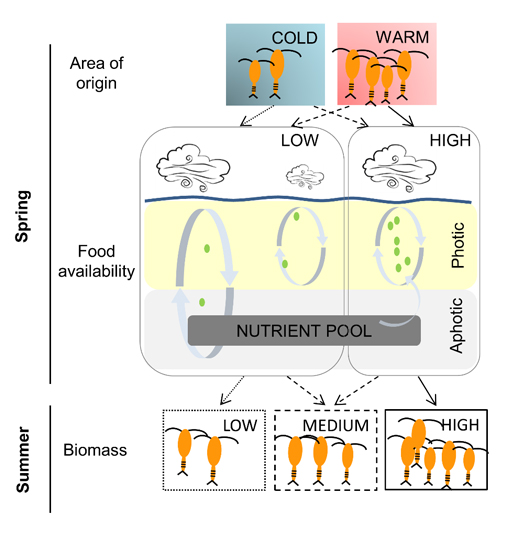Webpages tagged with «Copepod»

A new pan-arctic study indicates that Calanus copepods do not necessarily descend deep for diapause in winter; instead, parts of the population remain active. Moreover, the deeper distribution of the larger and more conspicuous Calanus hyperboreus indicates that predation pressure is a key trigger for diapause at depth. In the central Arctic Ocean where visual predation pressure is lower, copepods might be relieved from the incentive to descend and can remain closer to the surface in winter.

A recently paper published in PNAS, members of the CEES Marine Group explore potential climate effects on Calanus finmarchicus, a key zooplankton species in the North Atlantic. The paper shows how the combination of shallow mixed-layer-depth and increased wind apparently increases chlorophyll biomass in spring, and in turn C. finmarchicus biomass in summer. These findings strongly suggest bottom-up effects of food availability on zooplankton, and highlight the need to consider climate effects “beyond temperature” when projecting zooplankton dynamics under climate change.

Increased sea temperature due to climate change can influence the distribution, abundance and seasonal timing of zooplankton. Changing zooplankton dynamics might in turn impact the higher trophic levels, such as fish and seabirds, feeding on these animals. In a recent paper, we show that temperature variation in the Atlantic waters of the Norwegian Sea and Barents Sea might have stronger effects on the abundance of the younger than older development stages of Calanus finmarchicus, and that these stages might appear earlier in spring during warm years.